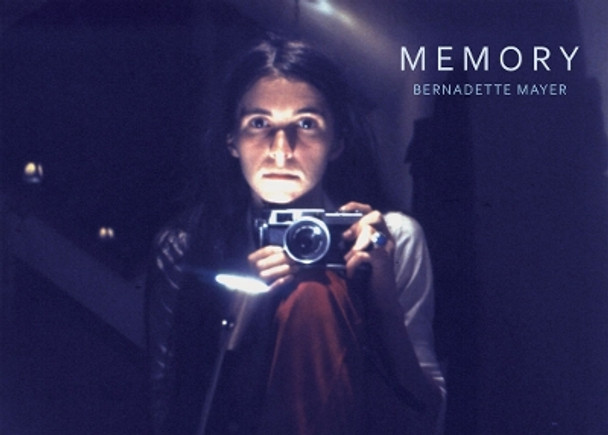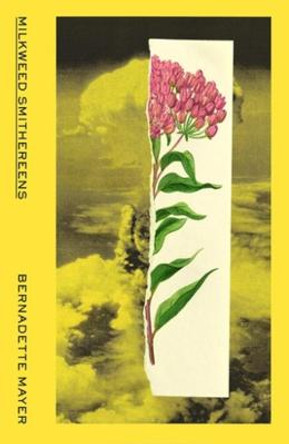Description
Reviews
What is illuminated in Mayer's attempt to record what she experiences as she experiences it is the space where images, interiority, and action flow into each other and carry equal weight. -- Dennis Cooper * DC's *
Mayer's artfully artless photographs - which collect streets, landscapes, clouds, weather, friends, family - are often very beautiful on their own. Arrayed in tight grids of small-scale reproductions they become something else: an expansive work of personal cinema, relayed in stills. And Mayer's mighty, long-breath journals provide a dynamic narration, making a work that is large and resonant while attentive to the smallest things. -- Luc Sante * Photo Eye *
Mayer's Memory [contains] more than 1,100 artfully artless photographs collecting rooms, skies, flowers, streetscapes and landscapes, friends and family in vibrant 1970s color. The photos are necessarily small (roughly 21/2 inches by 13/4 inches), arrayed in grids of nine, along with intermittent full-page blowups, and as lovely as individual images are, their power is cumulative: a wide-ranging work of personal cinema, in stills. Her journal provides the narration in galloping long-breath prose poetry that feels as spontaneous and alive as the pictures. -- Luc Sante * New York Times *
[Memory] has been more frequently exhibited in condensed forms, and the text was published without accompanying photographs in 1975. Now Siglio Press have published a complete edition, interspersing the photographs with her journal entries -- Janique Vigier * London Review Of Books *
Elegy always has a way of creeping into art that documents the once teeming, now empty past: it is almost too painful to glimpse the innocence and the freedom of Mayer's summer from the point of view of our current fearful season. It can seem a dubious advantage to have survived all those disconnected phones, defunct addresses, dead or forgotten friends. At our moment in history, 'Memory' reads in part as an archive of suspended (in both senses of the word) pleasures. -- Dan Chiasson * New Yorker *
It may bear reiterating that when Mayer made these notes on her life, self-conscious as she was, it wasn't her writing that she meant to make known. Perhaps doing this kind of reading can help us, saturated as we are with sculpted life narratives, keep better diaries. The little uneven crevasses that form throughout the document to which her estate has granted us access are what make it especially satisfying to read, a different kind of historical documentation of how an artist comes to be. -- Thea Ballard * Nation *
Seen in another light, the project seems to anticipate the way we think about representing life today, whether we're sharing snippets of our days on Instagram or unpolished fragments of thought on Twitter. [...] In her thoughts and images, we find an immersion in quotidian minutiae, synecdoche for a lost era that feels almost eerily contemporary. * New York Times: T Magazine *
An American poet - and synesthete - considers the ever-changing colours of the alphabet. * Frieze *
In Memory, the poet shapes a new visual and textual language that explores the simmering possibilities of consciousness. -- Marcella Durand * Hyperallergic *
Though Mayer's writing has exemplified many of the stylistic traits of the New York School-detailing day-to-day life, chattiness, an emphasis on memory, an eschewal of lyric sanctimony-she explicitly rejected her then-contemporaries' "addiction to style." Her ambitions here are not stylistic, but relational: the goal was to, without writing a book, get the audience to become "a real reader," by which she meant she would give them so much access that they might become her. I, sadly, did not become Bernadette Mayer reading Memory-which reassures me that the projects of both Memory and memory are ongoing, after all. -- Diana Hamilton * BOMB *
Time travel into summery freedom on a 1971 road trip: this sumptuous book offers a portal into life off the leash. The result is an epic photo-poem: an incantatory work that investigates the nature of memory, monumental in scope (over 1,100 photographs, two hundred pages of text and six hours of audio recording) and intimate in feel. -- Barbara Epler * TANK Magazine *
Memory is not strictly a diary, but it pockets the day with similar devices; the entries read like consciousness spilled, even though, after the fact, she used both journal notes and the photos to refine and complete the text. Lines fall and trip over themselves to keep pace with her thought; objects are pilfered from their verbs; words and phrases repeat so many times they end up aural refrains cleaved from ordinary meaning. -- Phoebe Chen * Garage *
Each of Mayer's daily journal entries rolls and eddies as she allows herself to thoroughly investigate the elasticity of language and the contours of her mind. Arrayed in grids, the photographs-of grass, cats, friends, flags, skies, boats, herself, the moon-fix into place the minutiae of her days. * Paris Review *
The American artist and poet spent one month in 1971 photographing her day-to-day life in minute detail, sharing both intimate and mundane moments, and delving into the slippery nature of memory. -- Emily Gosling * Elephant *
This substantial volume will engage fans of Mayer and introduce new readers to a particular and remarkable voice. -- Editors * Publishers Weekly *
A fabled work of installation art that plunged viewers headlong into the fizzing slipstream of [Mayer's] consciousness [...] Her epic's newest form: a treasure of a book -- Jennifer Krasinski * Bookforum *
Book Information
ISBN 9781938221255
Author Bernadette Mayer
Format Hardback
Page Count 368
Imprint Siglio Press
Publisher Siglio Press




